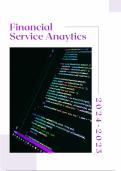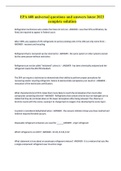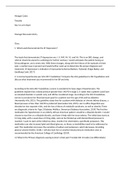Samenvatting
Samenvatting (FSA) Financial Services Analytics, (Kris Boudt, 2024) - 14/20!!!
- Instelling
- Universiteit Gent (UGent)
Het document is een uitgebreide en gedetailleerde samenvatting van het vak Financial Services Analytics, gedoceerd door Kris Boudt in de opleiding Handelswetenschappen: Finance- en Riskmanagement aan de Universiteit Gent. Deze samenvatting omvat alle theorielessen, aangevuld met zorgvuldig uitg...
[Meer zien]





